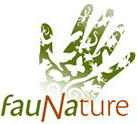Indigenous plants or plants that are historically native to your area, whose seeds can be sourced locally, are ideal. They are likely to be the backbone of any wildlife garden and are well suited to your local conditions. 
Specialist nurseries can help in this regard, as can organisations such as Local Councils, Bush Care groups or Trees for Life. An environment rich in nectar and seed, available at all times of the year, is likely to attract the greatest number of birds, mammals, butterflies and other species.
Many exotic cultivars are also highly attractive to native fauna (e.g. fruit trees, ground covers and climbers) and may be worth considering. However, certain species (such as Olives, Arum lilies, Cape Broom, Sweet Pittosporum or Mexican Feathergrass) are likely to become invasive weeds and need to be avoided at all costs. Also, just because a plant is being sold as a “native” doesn’t necessarily make it ideal for your garden!! Some of the most noxious weeds to be found are “Australian” species from other parts of the country, which have been inappropriately planted.
Does it make sense to enhance your garden for wildlife, at the risk of endangering other local habitats? If you are going to plant a species introduced from elsewhere, please MAKE SURE IT STAYS WHERE IT IS PLANTED!
Contact your local council or Department for the Environment in your state for a list of plants likely to be an issue in your area, particularly those species classed as weeds which councils prefer are not planted.
